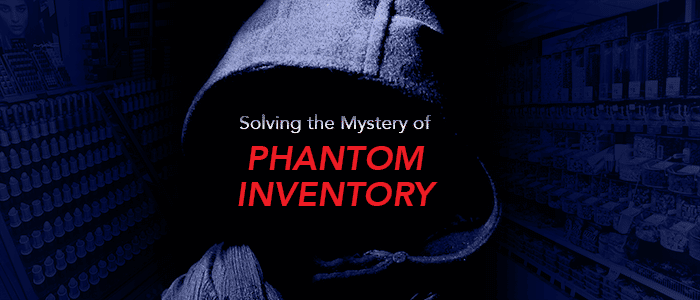Phantom Inventory may sound like the latest horror flick out in theaters, but the truth is, it is a real thing that causes hundreds of businesses to lose profits every day. Now that’s scary!
Phantom Inventory is a common retail industry expression for goods that inventory accounting systems consider to be on hand but are not actually available. These are items that should be selling but they’re not. For example, think of a pumpkin spice scented candle in the Fall. These are normally a no-brainer sale, but if for some reason they’re not selling like hot cakes then that usually means there is a problem. According to a study completed by the research firm, IHL Group, inventory distortion (which includes out-of-stocks and overstocks) costs retailers more than $1 trillion globally. Shoppers encounter out-of-stocks as frequently as 1 in 3 shopping trips. This Phantom Inventory can create issues with demand forecasts, operating costs, replenishment and most importantly — your customer! If a retailer’s pumpkin spice scented candle isn’t easily found, then those hard-earned customers are going to take their business elsewhere. Eeeek!!
What causes Phantom Inventory?
Phantom Inventory is like doing laundry — when you never get as many socks out of the dryer as you put in. Where do they all go? Just like the mysterious washing machine lost sock debacle, no one is really 100% sure what happens to this oddly disappearing inventory. There are several common explanations such as theft, paperwork errors, incorrect recording of sales or just placement error. Perhaps, the product is in the backroom or was maybe moved by accident behind another item? Whatever the case may be, there is a way to help keep this issue controlled.
So, how do you identify Phantom Inventory?
In the past, retail operations didn’t have a smart way to identify Phantom Inventory, rather they focused on the areas that are clearly out of stock with zero inventory on record. Without visibility or direction to the SKUs that should be selling but aren’t, and show in the system as having inventory on hand when they don’t, how would employees know there is a problem?
Today, Intelligent Inventory Optimization Solutions use Machine Learning (ML) to “read” the retail environment and analyze the occurrence and probability of Phantom Inventory. Implementing a process and conducting in-store reviews, retailers can measure the accuracy of the ML estimation and systematically identify stores and districts with high-probability for Phantom Inventory. This information equips retailers to address the problematic areas and make better decisions to increase sales. Furthermore, once Phantom Inventory is probable, the store operations team can focus on the trouble area, regularly monitor inventory and collaborate with suppliers to assist in reducing the incidences of these “lost sales”. Mystery solved!
What do retailers get out of this? (Besides solving the mystery!)
When retailers can see that a product should have sold and then they can look for that product and it isn’t found, an inventory adjustment can be made. If it is found it can be moved back to its proper space on the store shelf and happily sold. The Mystery of Phantom Inventory was solved for Aubuchon Hardware. After implementing an Intelligent Inventory Solution, the company improve overall In-Stock by nearly 1%, which contributed to increased annualized sales by over 5%.
Phantom Inventory can be a hazardous problem because it often goes unnoticed, until a customer points out that your most popular candles are not available, like they should be. So, while this ‘ghost’ can be a pest, it is easily removed with the right tools and the right team. Ghostbusters!


